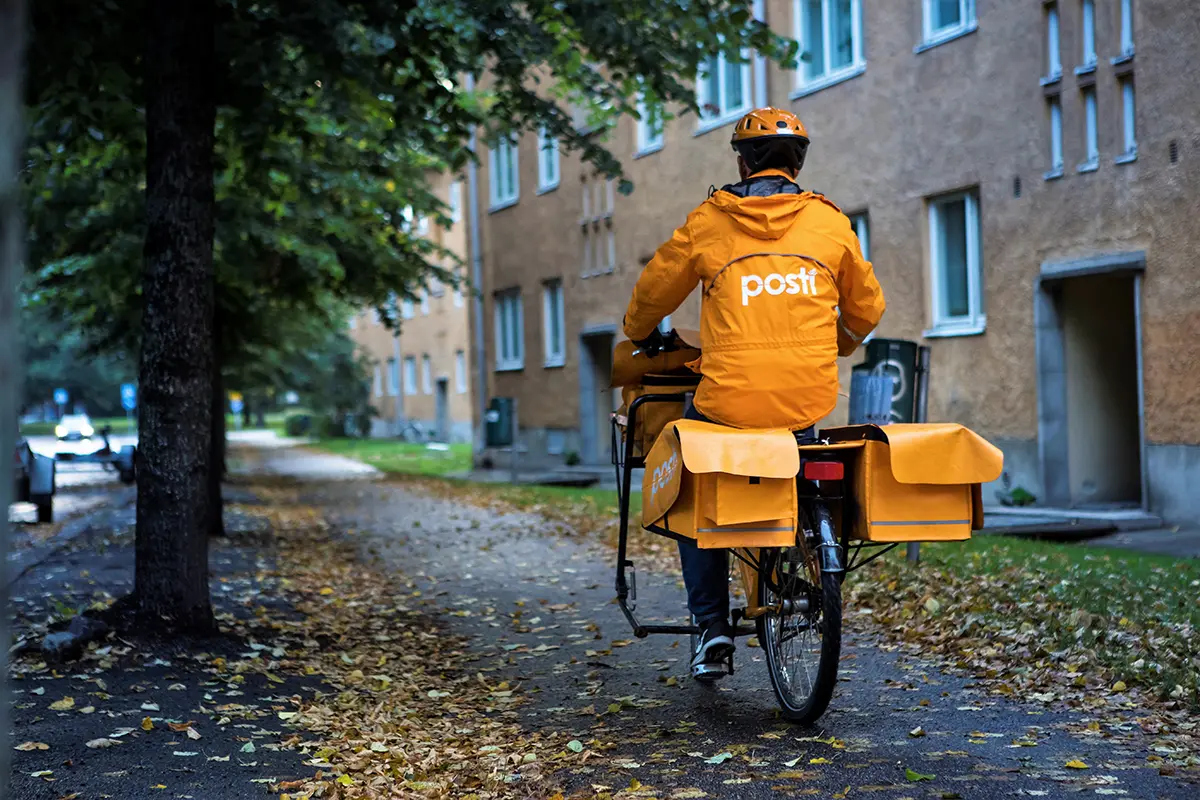Posti
Posti is the leading postal and logistics service company in Finland. They have the widest network coverage in Finland, visiting approximately three million households and companies daily.
WebsiteWhen we started, Posti was not content with their existing website. The site was identified to be the bottleneck for their business – buying and self-service, in general, were complicated, which made the system technically incapable of handling the scaling needs. It was clear that the existing service could not be transformed to support their business needs any longer, so we built a completely new scalable and sales-optimised www.posti.fi.
Key objectives
Increase sales
Firstly, the site should enable effortless purchasing of Posti's services and products. In practice, this means well-thought and optimised purchasing funnels. Secondly, sales can be increased by optimising search engine results. Better SEO, for example, by identifying appropriate search phrases, makes it easier for the customer to find what they are looking for.
Additionally, it’s essential that also B2B companies can easily get acquainted with Posti’s services that solve their precise needs, engage with Posti’s inbound content, and finally contact a salesperson.
Increase self-service rate
Buying and sending should be a smooth and independent process of utilising online channels and the parcel locker network. The goal was to make the process so simple that people would succeed in it without the help of customer support. A key aspect in increasing the self-service rate was reconstructing a well-functioning customer support system with efficient search functionality.
Build scalable tech to accommodate growth
It was essential to ensure that the architecture is scalable, able to serve a large number of simultaneous users quickly, and that it is easy to develop further to allow continuous service improvement and optimisation. Our work would act as a foundation that enables seamless ecommerce, where the same headless service architecture can be used on different channels, such as the website or the mobile app.
The key challenge for Posti.fi is combining the various use cases and call-to-actions from numerous B2B and B2C services. Making these easy to find provides a significant business case in cost savings and sales. Impressively enough, Columbia Road combined all this into an elegant user experience and a technically cutting-edge solution that allows us to be data-driven in the future.
Timo Korander, Head of Consumer Services - Digital Commerce, Posti
Our approach
We started by forming an understanding of the business goals. What is the desired business impact, and how to achieve it? What kind of concept would suit Posti’s business objectives the best?
Posti.fi is a large and complex site, which meant that replacing everything at once would have pushed our go-live date very far. Instead of doing one major release, we divided it into small parts while maintaining a pleasant user experience in the transition phase.
Design
One of our goals was to remove the barriers between different services owned by Posti and to combine them into one unified entity. To achieve this, we started a collaboration process between different development teams at an early point of the project.
Another core design challenge was to help users to find relevant content related to their needs from the numerous B2B and B2C business and product areas. The key success factors were to crystallise the fundamental value propositions of each area, prioritise content, and ensure internal stakeholder buy-in for the renewed concepts.
In each phase together with Posti, we analysed the initial customer needs and defined the most important areas to improve. We built and tested different versions of the information hierarchy and finally developed the right concept, which we then turned into website designs and prototypes. The prototypes were tested with real customers, and the designs were adjusted based on the feedback we received.
Technical implementation
To support the vast amount of content and traffic on Posti.fi, we needed to create a well-functioning platform for both Posti’s customers and administration. Content management is handled through the Contentful SaaS platform. The site is implemented using serverless technologies, while the front end is made with React, which is then built to static pages with Gatsby. Customer service and sales contact points were integrated into Salesforce.
The content is pre-built and stateless, so there is no server-side logic that has to be executed for each request, which makes the site fast for users. This solution was ideal for Posti’s needs, as it ensures scalable delivery, allowing thousands of simultaneous users with minimal latency.
We implemented new metrics to get more data on transactions as well as customer satisfaction to enable further optimisation and testing. Posti can now easily update the site, create campaigns and landing pages, and run A/B tests independently without requiring technical help with this setup.



Impact
Posti.fi is the entry point to all Posti’s sales and self-service channels. The renewal of the posti.fi website, from design to a completely new architecture, has made customer journeys much more straightforward – from website entry until purchase.
Highlights
- Effortless buying regardless of where on the site the user might find themself
- More user-friendly self-service across different devices and customer touch-points
- Customers find answers to their questions without customer service due to website restructuring and improved SEO
- Customers utilise the network of parcel lockers more independently
- Optimised customer journeys help to increase the conversion rate
- Improved customer satisfaction and decreased customer service costs
- New metrics for gathering data on transactions and customer satisfaction to enable further optimisation and testing
The first steps have been taken towards Posti’s goals, but the work is not over yet. The heavy-lifting part, creating the new service, has been completed, whilst the process of growth hacking and continuous optimisation has only begun and is continuously ongoing. Further development is heavily based on web analytics data and hypotheses around user behaviour.
The Data Handbook
How to use data to improve your customer journey and get better business outcomes in digital sales. Interviews, use cases, and deep-dives.
Get the book


